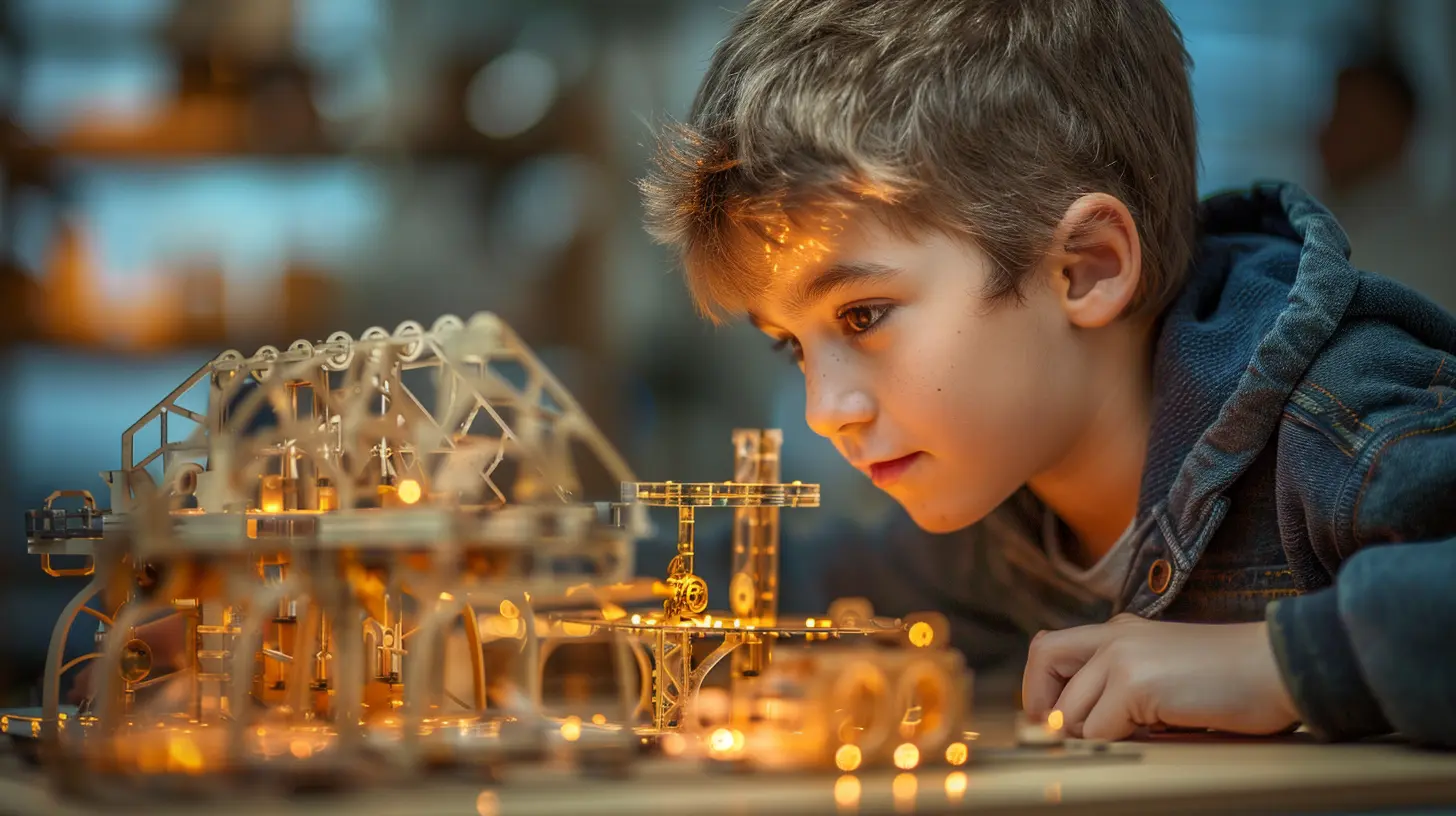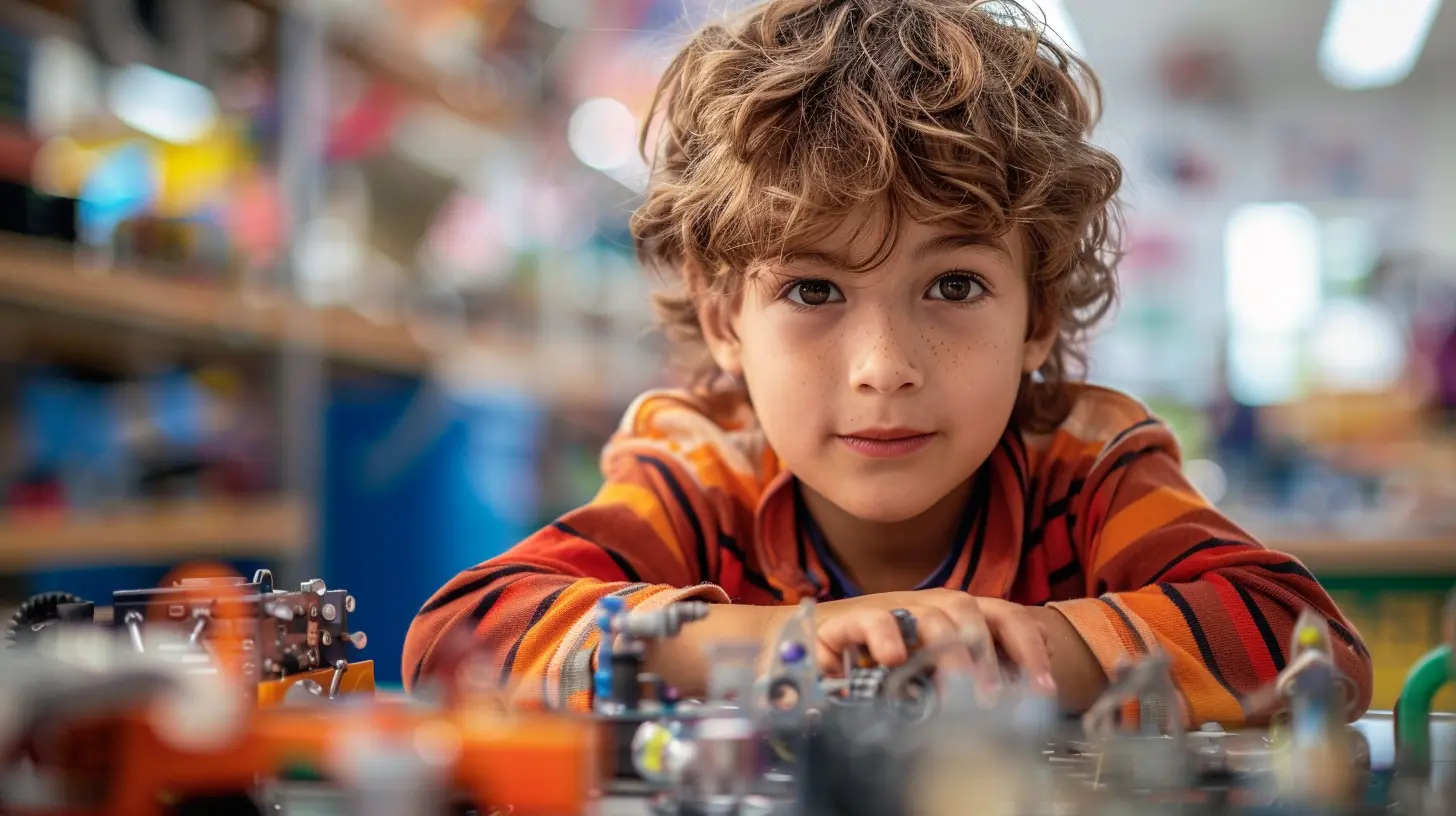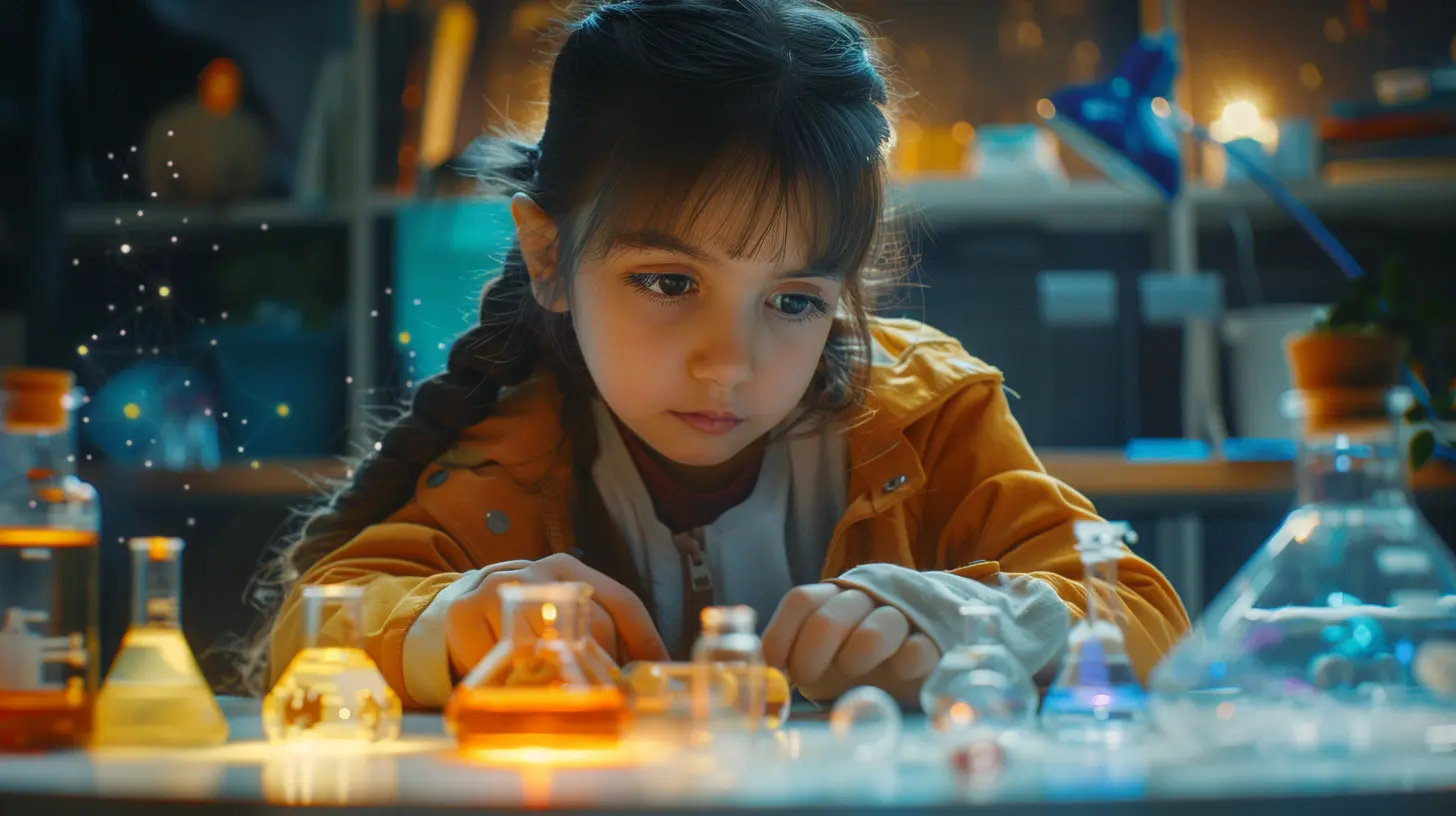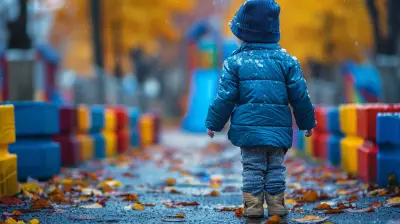STEM Activities That Spark Curiosity in Kids
9 June 2025
Have you ever watched a child ask a million "why" questions in just five minutes? That never-ending curiosity is like a superpower waiting to be nurtured. And guess what? STEM (Science, Technology, Engineering, and Math) activities are the perfect fuel for that little engine of wonder. The best part? You don't need to be a rocket scientist or spend a fortune on fancy supplies. All you need is a bit of time, some everyday items, and a willingness to get hands-on.
In this article, we're diving deep into the world of STEM activities that spark curiosity in kids. Whether your child is building, experimenting, coding, or simply playing, these activities are designed to inspire imagination, problem-solving, and "aha!" moments. Ready to make learning feel like magic? Let's get started.
Why STEM Matters (Yes, Even for Toddlers!)
Before we jump into the fun stuff, let’s answer the big question—why should kids care about STEM? And why should we, as parents and caregivers, encourage it?STEM isn't just about math problems or science facts. It’s about thinking critically, solving problems, figuring out how things work, and—most importantly—staying curious. In fact, kids who engage with STEM early on:
- Develop stronger problem-solving skills
- Are more likely to enjoy school (yep, even math!)
- Learn how to bounce back from failure (because not all experiments work!)
- Build confidence in their own ideas and creativity
And the best part? STEM is everywhere. Baking cookies becomes a chemistry lesson. Building a fort turns into an engineering project. Even playing with shadows on the wall can spark a conversation about light and angles.
Easy and Fun STEM Activities That Don’t Feel Like "School"
Let’s be honest—if it feels too much like homework, kids will tune out. So here are some bite-sized, super fun STEM activities that feel like play but pack a big learning punch.1. DIY Slime – Stretchy Chemistry in Action
What kid doesn’t love slime? It’s gooey, stretchy, and oddly satisfying to poke. But it’s also a crash course in polymers and chemical reactions.What You’ll Need:
- White glue
- Baking soda
- Contact lens solution
- Food coloring (optional)
What’s Going On: Mixing glue (a liquid polymer) with baking soda and contact solution creates an endothermic reaction, forming a new substance—your slime! It’s science you can squish.
🧠 Curiosity Trigger: Ask your child, “What happens if we change the amount of baking soda?” Let them hypothesize and test it out!
2. Egg Drop Challenge – Engineering on a Budget
This one’s a classic for a reason. It’s all about designing something that protects an egg from a fall. And the sky’s the limit—literally and creatively.What You’ll Need:
- Raw eggs
- Recyclable materials (straws, newspaper, plastic bags, tape, cotton balls)
- A high place to drop from (balcony, ladder, or stairs)
How It Works: Kids design a "safety pod" for their egg. The goal? Protect the egg when dropped from a height.
🧠 Curiosity Trigger: “Why does cushioning help? What if we added a parachute?” Watch them transform into little engineers with a mission.
3. Build a Pasta Bridge – Structures and Strength
You won’t believe how invested kids get when you ask them to build a bridge out of pasta. They’ll bend spaghetti, glue penne, and stack lasagna sheets like architects.What You’ll Need:
- Dried pasta
- Glue gun (with supervision!)
- Ruler and measuring tape
- Weights (coins, small books, etc.)
The STEM Angle: This activity teaches about tension, compression, and load-bearing. You'll be surprised how much weight a well-designed bridge can hold.
🧠 Curiosity Trigger: “Which pasta shape is the strongest?” Let them test their bridge and then improve the design. Instant learning!
4. Balloon Rockets – Physics in Your Living Room
This one’s a blast—literally! Watch a balloon tear across the room on a string, driven by simple Newtonian physics.What You’ll Need:
- Balloon
- String
- Straw
- Tape
Set It Up: Thread the string through the straw, tie it between two points, and tape a blown-up balloon to the straw. Let go and watch it zoom!
🧠 Curiosity Trigger: “What if we use a bigger balloon? Or a different string?” It’s hands-on learning with immediate results.
5. DIY Weather Station – Junior Meteorologist Time
Your backyard can be a science lab! Building a weather station teaches kids to observe, track, and make sense of natural phenomena.You Can Make:
- Rain gauge (using a cut plastic bottle)
- Wind vane (paper arrow on a stick)
- Thermometer holder
- Cloud chart
The Learning Angle: Tracking weather over time encourages data collection and prediction—core science skills.
🧠 Curiosity Trigger: “Why do clouds look different every day?” Let them interpret their weather logs and make future forecasts!
6. Code a Story – Tech + Creativity
Not all STEM happens with test tubes! Coding is today’s literacy, and the earlier they start, the better. You don’t need to be a programmer—there are kid-friendly platforms out there like Scratch and Tynker.How It Works: Kids use drag-and-drop blocks to create interactive stories, games, or animations.
🧠 Curiosity Trigger: “What happens if the character jumps higher?” They’ll dive into loops, conditions, and sequencing without even realizing they’re learning programming logic!
7. Invisible Ink – Secret Messages and Science
A little mystery goes a long way with kids. Writing secret messages with lemon juice turns your kitchen into a science lab and spy academy.What You’ll Need:
- Lemon juice
- Cotton swab
- White paper
- Heat source (a lamp or iron)
How It Works: The acid in the lemon juice oxidizes and turns brown when heated—revealing the hidden message!
🧠 Curiosity Trigger: “What other liquids might work?” Let them test milk, vinegar, or soda. Boom! You've got a chemistry detective.
8. Floating or Sinking Experiment – Simple Science, Big Reactions
Spoiler alert: not everything floats. This activity is magic for little ones and still fun for older kids.What You’ll Need:
- Large bowl of water
- Various household items (spoon, apple, Lego, rock, crayon, etc.)
- Paper and pencil for predictions
How It Works: Make a prediction chart first. Then, drop each item in water and record what happens.
🧠 Curiosity Trigger: “Why does a heavy watermelon float but a small coin sinks?” Cue a conversation about density and displacement.
Tips to Keep the STEM Fire Burning Bright 🔥
Kids are naturally curious, but it’s easy for that spark to fade when they hear “test” or “worksheet.” Here’s how to keep things engaging:- Let kids lead — Their questions should guide the activity, not the other way around.
- Celebrate failure — Every “oops” moment is a learning opportunity.
- Get messy — Real discovery is rarely neat. Embrace the chaos!
- Join in the fun — If you're excited, they will be too.
And remember, it’s not about having the right answers. It's about asking the right questions and being okay with figuring it out together.
STEM Activities by Age Group
Wondering if your 4-year-old is too young for STEM? Or if your tween will find it “cool enough”? Don’t worry — here’s a quick guide by age group with examples.Ages 3–5 (Preschoolers)
- Building with blocks- Sorting objects by shape or size
- Exploring magnetic toys
- Playing with water and sand (early physics!)
Ages 6–9 (Elementary)
- Simple circuits with batteries and bulbs- Kitchen chemistry (like baking soda volcanoes)
- Lego engineering challenges
Ages 10–13 (Tweens)
- Coding projects- Robotics kits
- Building Rube Goldberg machines
- Designing apps or games
Even teens can get involved with more advanced tech like 3D printing, drone-building, or physics simulations. The key is to keep it hands-on and relevant to their interests.
Your Kitchen Table Is a Lab, Your Backyard a Classroom
You don’t need to enroll your child in a fancy STEM camp or invest in expensive kits to foster curiosity and innovation. The most powerful lessons often come from the simplest setups—like a balloon taped to a straw or a bunch of spaghetti sticks glued into a bridge.And here’s a little secret: when kids are doing these activities, they’re not just learning science or math. They’re learning how to think, question, try, fail, and try again. And isn’t that the kind of learning that really sticks?
So pull out a baking soda box. Grab some string. Start with a question like, “What do you think will happen if…” and see where it takes you. You’ll be amazed at what you both discover.
Final Thoughts
Curiosity is contagious. When we, as parents and caregivers, model wonder and excitement for discovering how the world works, our kids follow suit. STEM activities aren't just boxes to tick on an educational list—they're invitations to explore the world with wide eyes and open minds.So, next time your child asks “Why is the sky blue?” or “How does that work?”—don’t just Google it. Try it. Test it. Tinker with it. You’ll be nurturing a lifelong love of learning—and that’s the best gift you can give.
all images in this post were generated using AI tools
Category:
After School ActivitiesAuthor:

Tara Henson
Discussion
rate this article
2 comments
Clover McKale
Embrace the adventure of learning with your kids! STEM activities not only spark curiosity but also foster creativity and critical thinking. Let their imagination soar as they explore the wonders of science!
June 19, 2025 at 4:18 PM

Tara Henson
Thank you for highlighting the importance of STEM activities! Encouraging exploration and creativity truly enhances learning experiences for kids.
Sierra Hall
Engaging kids in STEM activities nurtures critical thinking and fosters a lifelong love for learning.
June 18, 2025 at 3:12 AM

Tara Henson
Absolutely! Engaging kids in STEM not only boosts critical thinking but also cultivates a lasting passion for discovery and innovation.


